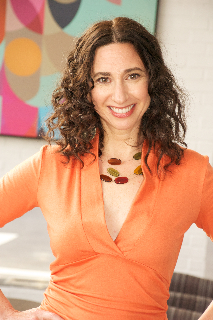28 to Great includes a thoughtful nutrition plan we created in collaboration with our food hero, Andrea Nakayama. Andrea is a functional nutritionist, educator and speaker based in Portland, Oregon and owner of the online nutrition enterprise Replenish PDX. Read on to learn more from Andrea!
* * * *
This nutrition program can be distilled into 3 words: eat whole foods.
We’ve come up with a simple program that is based on eating whole foods so you have more energy and lose weight. Before diving into your meal plan, we thought it would be helpful to clearly define what is considered a whole food.
WHAT IS A WHOLE FOOD?
To consider what is a whole food, stop, look and listen. Before you take that first bite, before you fire up the stove, before you even decide to throw it into your grocery cart, take a moment to recognize where the food came from. Here are some questions to mull over as you consider this question:
CAN I IMAGINE IT GROWING?
It’s easy to picture a cornfield or a tomato plant. It’s tough to picture a field of marshmallows. There are no streams where one can scoop out a bucket of diet soda, and no trees where you can pick Cheerios.
HOW MANY INGREDIENTS DOES IT HAVE?
A whole food has only one ingredient—itself. No label of ingredients is necessary on simple foods like avocados, salmon, wild rice.
WHAT’S BEEN DONE TO IT SINCE IT’S BEEN HARVESTED?
In our opinion, the less, the better. Many of the foods we eat today no longer resemble anything found in nature. They’re stripped, refined, bleached, injected, hydrogenated, chemically treated, irradiated, and gassed. Many modern foods have literally had the life sucked out of them.
Read the list of ingredients on the labels of everything you buy: if you can’t pronounce something or can’t imagine it growing, don’t eat it. If it’s not something that you could possibly make in your kitchen or grow in your garden, be wary (for example, you can make butter from milk, but you’d be challenged to make margarine).
IS IT PART OF A FOOD OR THE WHOLE ENTITY?
This one can be tricky. Juice is only a part of a fruit. Oil is only a part of the olive. Low-fat milk is only a part of the milk. When you eat a lot of partial foods, your body in its natural wisdom will crave the parts it didn’t get. And eating those partial foods can easily lead to some of those wicked cravings.
HOW LONG HAS IT BEEN CONSIDERED A FOOD?
This may sound rough, but we’re going to challenge you to think of the context of a thousand years, or at least a couple of hundred. Has what you’re eating been around that long? Putting something on my toast or in my tea that the government approved for consumption last month warrants hesitation. These things repeatedly have questionable long-term effects. Most whole foods have been on the dinner table for centuries.
– Andrea
Looking for more delicious, healthy recipes? Visit the b3 Kitchen.










12 people have left a comment. Join the conversation!
View Comments